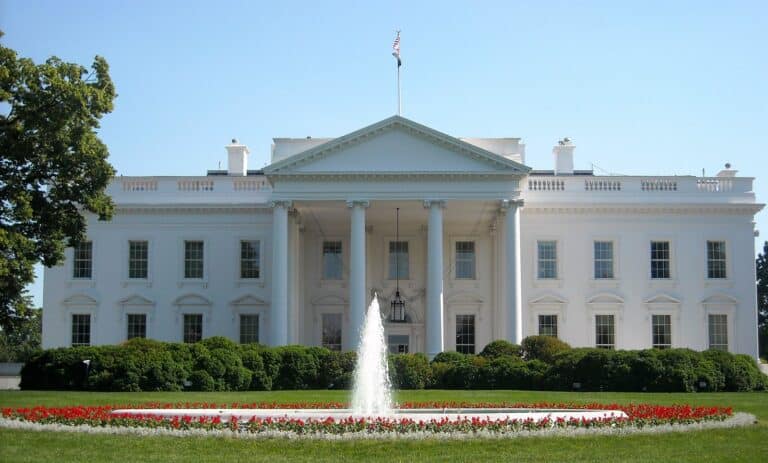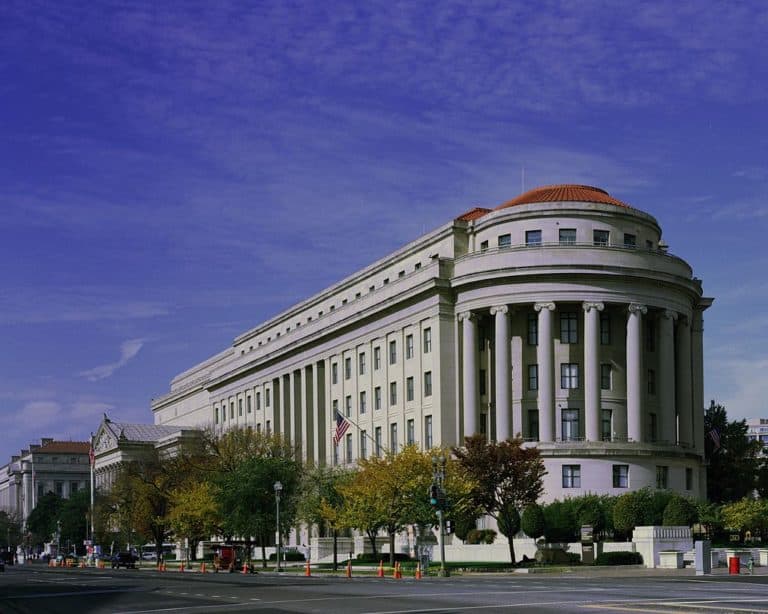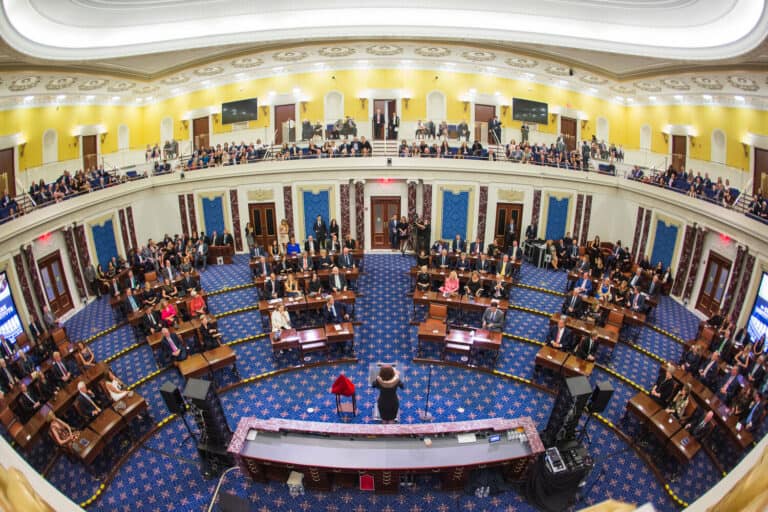
Connor Morgan is a student at Harvard Law School.
The Trump Administration is unleashing an unprecedented assault on the federal civil service. Even though civil servants enjoy removal protections under federal law, the Administration is mass-firing tens of thousands of civil servants nevertheless. The Administration’s decision to ignore these statutory protections is not surprising, given that the Supreme Court has constructed an increasingly muscular conception of the president’s power to fire executive branch officials. It is plausible that the Court will soon hold that the president’s removal power overrides civil servants’ removal protections, as the Administration has suggested.
But even if the president’s removal power supersedes these statutory protections, it does not prevail over the Fifth Amendment’s Due Process Clause. The Supreme Court has held that civil servants possess property rights in their continued employment. The history of civil servants’ due process rights is detailed in the Public Employees for Environmental Responsibility v. Trump complaint. That case challenges the Administration’s recent executive order reinstating Schedule F, which attempts to undermine civil service protections by reclassifying certain civil servants as at-will employees.
Because civil servants possess property rights in their continued employment, any action to deprive civil servants of their jobs must comport with both procedural and substantive due process. Yet, for the reasons explained below, the Administration’s mass firings of civil servants have comported with neither procedural nor substantive due process. Therefore, these mass firings have been unconstitutional, notwithstanding the president’s removal power. Importantly, the fact that these mass firings have been unconstitutional means that fired civil servants may sue to vindicate their constitutional rights. By seeking reinstatement, civil servants can meaningfully resist the Administration’s efforts to eviscerate the civil service.
Procedural Due Process
The Due Process Clause mandates that certain procedures must be followed before a civil servant can be removed from office. At a minimum, before a civil servant can be fired, their due process rights entitle them to “some form of pretermination hearing.” And even in reductions-in-force (RIFs)—the statutory hook that the Administration is purportedly invoking to fire civil servants—the Due Process Clause requires at least some process, such as providing the affected civil servants with advance notice, opportunities to respond, or rights of appeal.
The Administration has not afforded procedural due process to terminated civil servants, as the Due Process Clause requires. Many of these mass firings were accomplished via “generic emails sent out in a large wave,” thereby failing to provide civil servants with notice, opportunities to respond, or pre-termination hearings. Nor is it clear that future firings—many of which will be conducted as purported RIFs—will follow constitutionally adequate procedures, either. As a result, these mass firings violate the Due Process Clause’s guarantee of procedural due process.
Substantive Due Process
Because civil servants are protected by the Due Process Clause, substantive due process prohibits the Administration from firing them in an irrational or discriminatory manner. As the Supreme Court has held, a government action violates substantive due process if it is “divorced from any factual context from which [a court] could discern a relationship to legitimate state interests.” While many government actions can survive this permissive “rational basis” test, a “common thread” among those actions that have failed the test are those that “lack any purpose other than a ‘bare . . . desire to harm a politically unpopular group.’”
The Administration’s mass firings have been irrational and discriminatory, thereby failing this test.
First, there is no relationship between these mass firings and any legitimate state interest. Although there are a limited number of rationales that would legitimate a RIF, these mass firings do not accord with any of them. Superficially, perhaps, the mass firings could fall under the “reorganization” rationale, given that the Administration announced that these mass firings are intended to “eliminat[e] waste, bloat, and insularity.” But in the same breath, the Administration declared that the “corrupt” federal bureaucracy is operating “unproductive and unnecessary programs that benefit radical interest groups while hurting hardworking American citizens.” These official statements make clear that the mass firings are not mere efficiency-promoting reorganizations. Rather, these mass firings are predicated on the Administration’s policy disagreements with the programs that Congress instructed agencies to implement. The targets of the mass firings prove this point: Among the hardest-hit groups of civil servants are those who work at agencies with which the Administration has expressed its ire. And importantly, there is no legitimate state interest in undermining an agency’s ability to execute the laws that Congress instructed it to administer. Therefore, the mass firings are disconnected from any legitimate state interest, failing the rational basis test.
Second, these mass firings fail the rational basis test because they are motivated by animus against civil servants. The Administration has not attempted to hide its disdain for civil servants. President Trump alleged that civil servants are “destroying this country. They’re crooked people, they’re dishonest people.” And Russell Vought—the Director of the Office of Management and Budget, which directed many of these mass firings—stated that the Administration’s goal is to put civil servants “in trauma.” Quite simply, the Administration is mass-firing civil servants because it dislikes them. And when government action is predicated on this sort of animus, it cannot survive the rational basis test.
For these reasons, the mass firings violate civil servants’ substantive due process rights and therefore are unconstitutional.
Vindicating Civil Servants’ Due Process Rights
There are several pathways through which fired civil servants could seek reinstatement, thus concretizing the limits that the Due Process Clause imposes on the president’s removal power.
First, civil servants (or a class thereof) could bring their claims to the Merit Systems Protection Board (MSPB), which is “the guardian of Federal merit systems” within the executive branch. Because the Administration fired these civil servants in violation of their constitutional rights, “MSPB is required to reverse [the firings].” Even if MSPB rules against the civil servants, they could appeal to the Federal Circuit, which could “set aside” the firings—and thus reinstate the civil servants—because the firings were “not in accordance with law” and “obtained without procedures required by law.”
Second, civil servants could attempt to bring their claims in a federal district court. Although the Supreme Court has interpreted the Civil Service Reform Act generally to preclude district courts from adjudicating civil servants’ suits, these civil servants’ claims could be brought because their due process–based challenges are “entirely collateral” to any “substantive claim of entitlement.” The district could then “set aside” the firings, reinstating the civil servants. The recently filed Gober v. Collins case, in which a class of fired probationary employees brought a due process–based challenge to seek reinstatement, follows this pathway and wisely explains why the suit can proceed in the federal district court rather than in MSPB.
These two pathways both presume that an agency—and not the president—orders the firings. But even if President Trump fires a civil servant himself, they could seek relief in a federal district court. The court likely could not enjoin President Trump, but it could enjoin his subordinates from acting unconstitutionally. Specifically, the court, via a well-crafted injunction, could constructively reinstate the civil servant by enjoining other executive branch officials from treating the civil servant as having been removed. This constructive reinstatement would approximately remedy the violation of the civil servant’s due process rights.
It is worth noting that Supreme Court Justices Gorsuch and Alito believe that federal courts lack the equitable power to restrain executive officers from removing a subordinate. But even if this disputed view is correct, it is inapposite to whether courts can constructively reinstate civil servants who were unconstitutionally fired—after all, courts indeed possess the equitable power to enjoin unconstitutional actions by federal officers.
Through these litigation strategies, civil servants can resist the Administration’s lawless efforts to destroy the civil service.
—
This blog post is adapted from a longer article, which is available on SSRN.










Daily News & Commentary
Start your day with our roundup of the latest labor developments. See all
November 14
DOT rule involving immigrant truck drivers temporarily stayed; Unions challenge Loyalty Question; Casino dealers lose request for TRO to continue picketing
November 13
Condé Nast accused of union busting; Supreme Court declines to hear Freedom Foundation’s suit challenging union membership cancellation policies; and AFT-120 proposes a “Safe Sleep Lots” program for families facing homelessness.
November 12
Starbucks and the NLRB face off over a dress code dispute, and mental healthcare workers face a reckoning with AI.
November 11
A proposed federal labor law overhaul, SCOTUS declines to undo a $22 million FLSA verdict, and a railroad worker’s ADA claim goes to jury trial.
November 10
Meta unveils data center ads; partisan government emails blocked by judge; thousands protest in Portugal.
November 9
University of California workers authorize the largest strike in UC history; growing numbers of legislators call for Boeing to negotiate with St. Louis machinists in good faith; and pilots and flight attendants at Spirit Airlines agree to salary reductions.